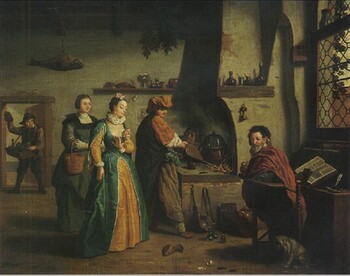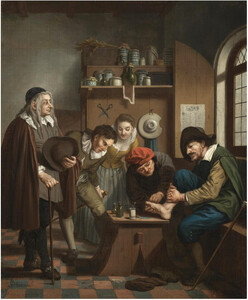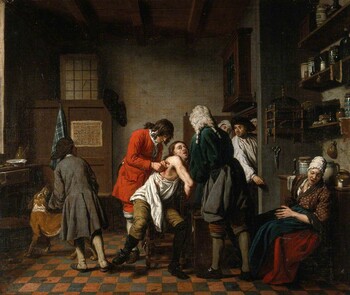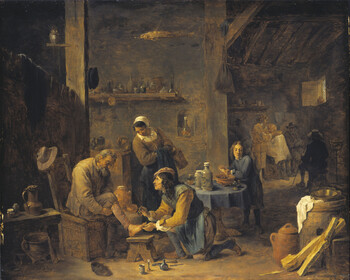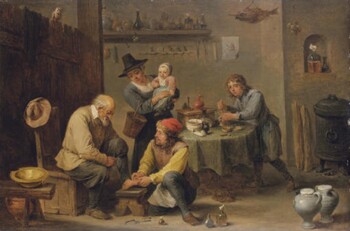David Teniers II
Doctor’s surgery
Oil on panel : 36,8 X 50,7 cm
Signed lower right “D. Teniers Fe”
Sold at Christie’s London, 6/12/07
For 311.700 £ = 433.107 €
This is a comparative item
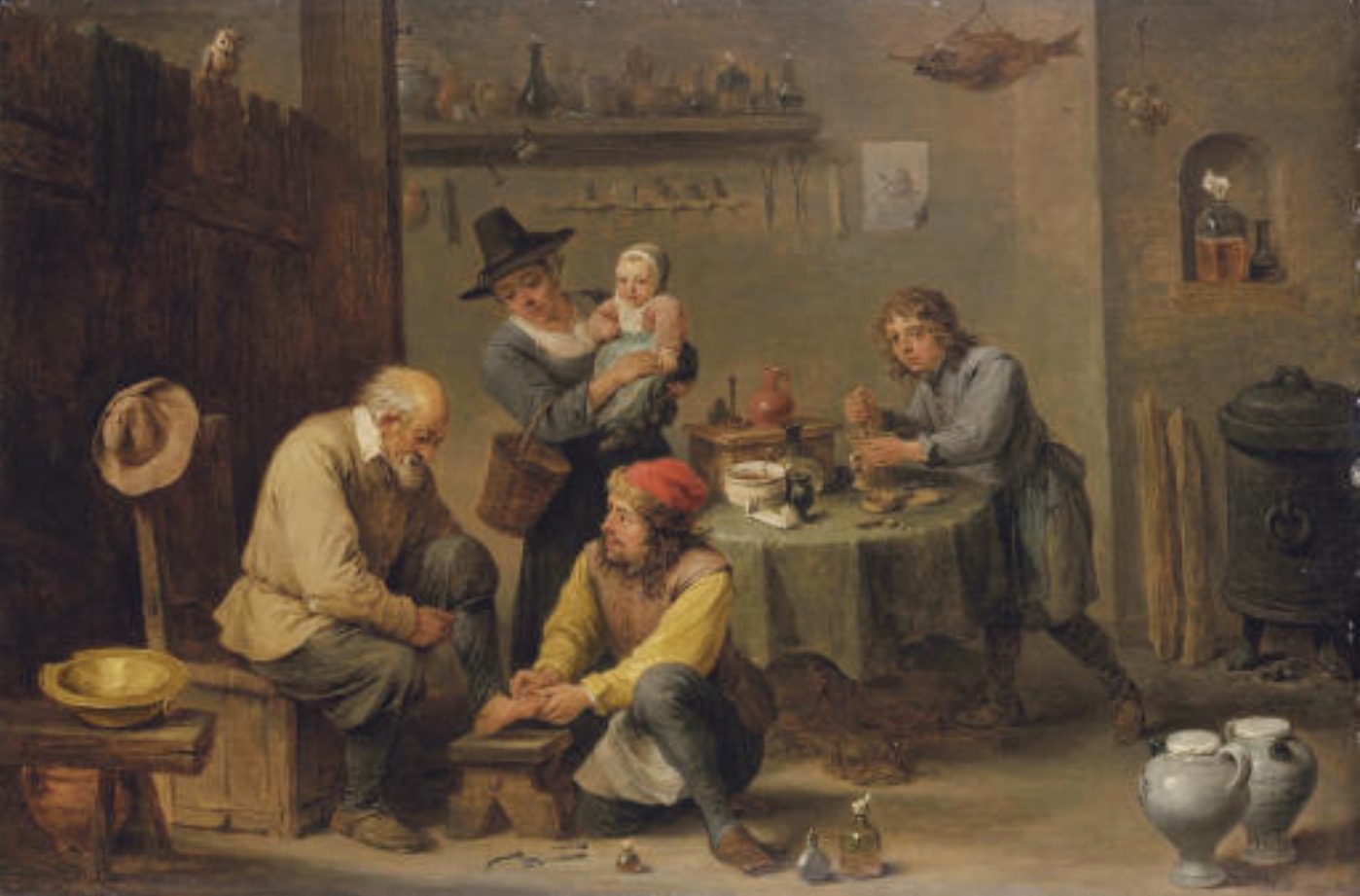
Painting for Sale
In short
Jan Joseph Horemans the Younger was a very productive, versatile 18th century Antwerp painter who inscribed himself, with a lot of respect for his 17th century Flemish predecessors, in a tradition of genre scenes and exterior family portraits. His compositions are happy, colourful and optimistic.
About Jan Jozef Horemans II
Flemish painter
Antwerp 1714 – 1792 Antwerp
Son and pupil of his father Jan Jozef I (1682 – 1759). Both painters were widely admired for their bourgeois interior and exterior scenes that admirably catch the spirit of their age.
Both painters’ second first name is sometimes spelt Josef.
Jan Jozef the Younger was Dean of the Painters’ Guild of Saint Luke in Antwerp in 1768-69 and in 1775-76. As the son of a painter who was already a member of the Guild he seems not to have been in a hury to become himself a Master in the Guild; he only officially joined in 1767, seven years actually after his father passed away.
Our painter was also member of the newly created (1788) artistic circle called “De Konstmaetschappij”, where artists would gather every week to know more about the members’ artistic production.
He was strongly influenced by his father:
- both painted small, anecdotic paintings, representing pleasantly animated bourgeois interiors strongly inspired by traditional 17th century Flemish (David Teniers II and Hieronymus Janssens) and Dutch genre painting (Gabriel Metsu and Pieter de Hooch) and by the contemporary English so-called “conversation pieces” of William Hogarth;
- both used the same signature.
Still it is fairly easy to recognize the differences between father and son:
- the father used darker colours (hence his nickname “Le Sombre” or
“le brun”) and his figures are stiffer.
- the son had a more refined colour scheme, using lighter colours
(therefore his nick-name was “Le Clair”).
About 17th and 18th century interior scenes with doctors and alchemists
Interior scenes representing doctors, alchemists, pharmacists, dentists and quack doctors at work were popular subjects of Dutch and Flemish genre scene painters.
During the 17th and 18th century their interiors can be recognized by a large, stuffed fish, usually a sturgeon (which in those days still lived in our waters), in some cases even a crocodile or an iguana, hanging from the ceiling. The reason for this is unclear. It probably refers to men of science having access to the rarest and most exotic ingredients.
Today in Hammarby near Uppsala, in the summer house of the famous Swedish botanist and zoologist Carl Linnaeus (1707 – 1778) still hangs a strange fish. Linnaeus is the father of biological classification of plants and animals, That fish was a present from his pupils who, as a joke, had assembled different animals to produce one large species, unknown to their professor.
About our painting
Alchemists were usually portrayed as artisanal, scholarly researchers in a shabby, chaotic interior packed with scientific instruments, crucibles and alembics, manuscripts and books.
Doctor’s interiors were richer, lacking the disorder that one associated with their pseudo-scientific colleagues.
Clearly Horemans has portrayed here a doctor’s study.
Why should you buy this painting?
Because it is a typical interior scene of Horemans the Younger: a lively, clear and colourful depiction of an 18th century doctor's office.
Comparative paintings
Click photos for more details

